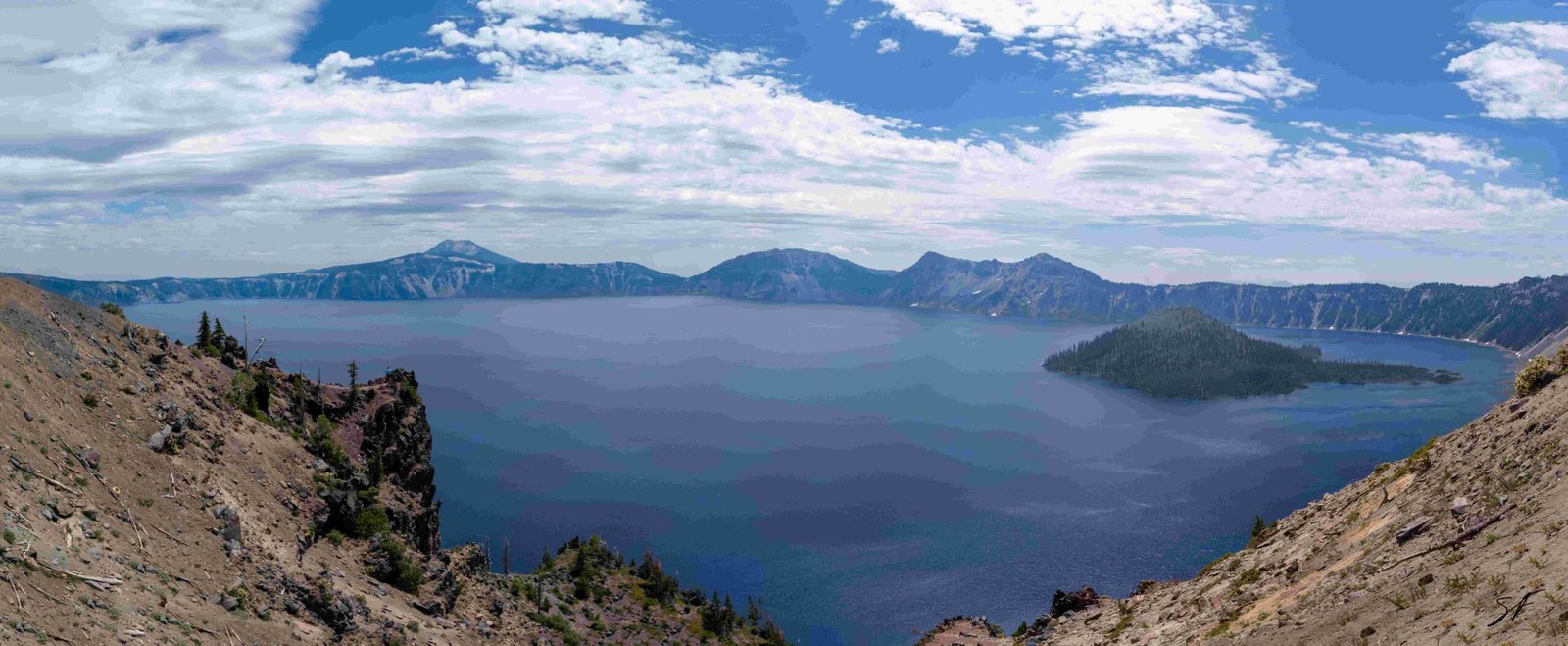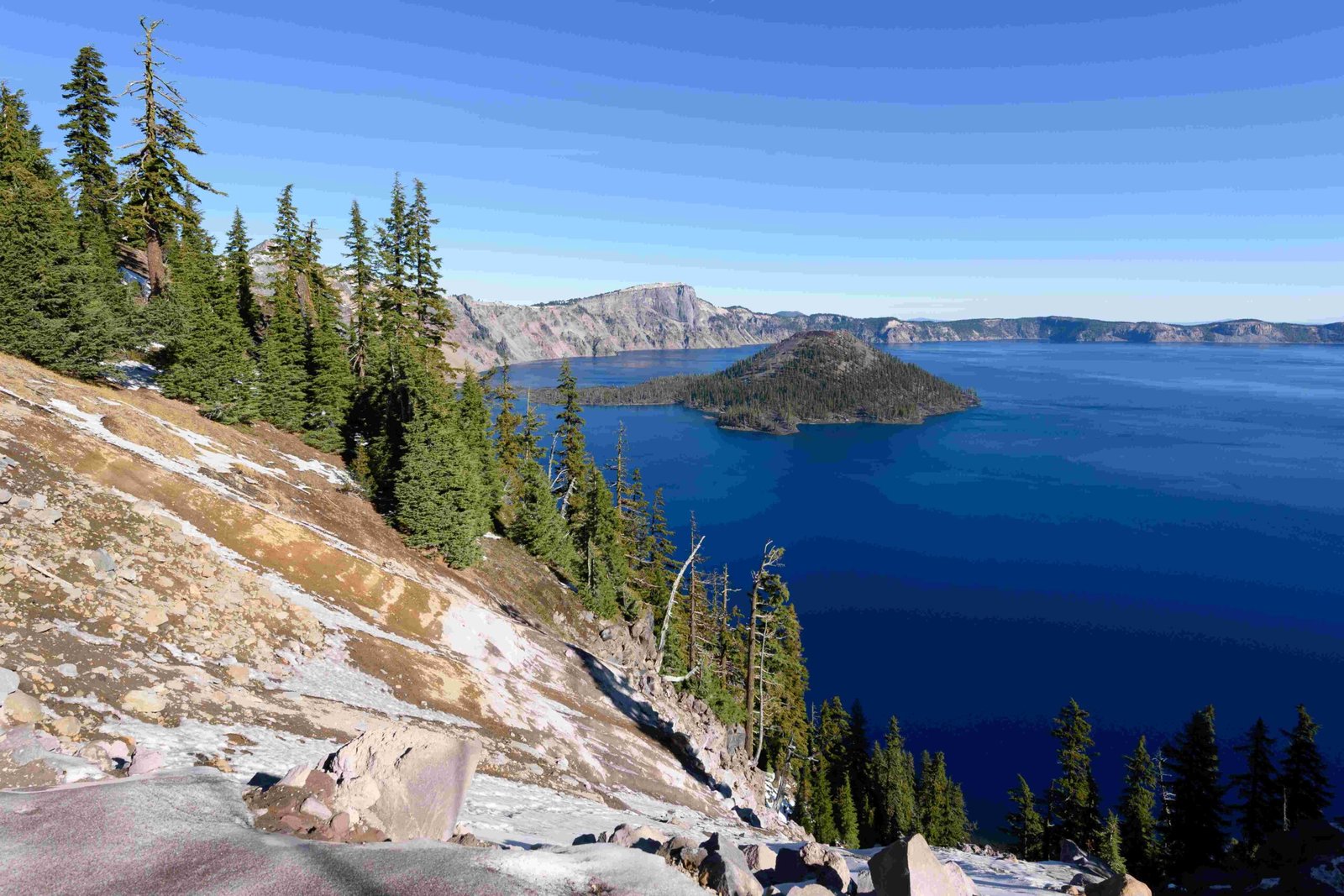The climb down to Crater Lake is a challenging and strenuous hike that requires good physical fitness and preparation. The Cleetwood Cove Trail, the only legal access to the lake’s shore, descends 700 feet over 1.1 miles of steep, switchback-laden terrain. This hike is comparable to climbing 65 flights of stairs and can be particularly demanding due to the high elevation and loose, slippery surface of crushed pumice. Hikers should be prepared for a difficult descent and an even more challenging ascent back to the rim.
What Makes the Descent to Crater Lake Challenging?

The descent to Crater Lake presents several challenges that contribute to its difficulty:
- Steep gradient: The trail drops 700 feet in just 1.1 miles.
- Loose surface: The trail is composed of crushed pumice, which can be slippery when dry.
- High elevation: The starting point is at over 6,000 feet above sea level.
- Limited shade: Much of the trail is exposed to direct sunlight.
- Switchbacks: The path consists of long, winding switchbacks that can be tiring.
These factors combine to make the hike down to Crater Lake a strenuous experience, even for those in good physical condition.
What are the Specific Trail Conditions for the Descent?

The Cleetwood Cove Trail offers unique conditions that hikers should be aware of:
- Trail Surface: Composed of crushed pumice, similar to fine sand
- Trail Length: 1.1 miles one-way (2.2 miles round trip)
- Elevation Change: 700 feet descent (and subsequent ascent)
- Average Grade: Approximately 12-15%
- Shade: Partially shaded, with significant exposed sections
- Seasonal Availability: Usually open mid-June to late October, weather dependent
Weather Impacts on Trail Conditions
| Season | Potential Conditions |
|---|---|
| Summer | Hot, dry, dusty |
| Fall | Cooler temperatures, possible early snow |
| Spring | Trail often closed due to snow |
| Winter | Trail closed |
Hikers should check current weather conditions and be prepared for rapid changes, especially considering the high elevation of the area.
What Level of Fitness is Required for the Hike?
The descent to Crater Lake demands a good level of physical fitness:
- Strong cardiovascular health
- Good leg strength and endurance
- Healthy knees and ankles
- No significant breathing difficulties or heart conditions
- Ability to handle high elevation (over 6,000 feet)
It’s important to note that the return trip (climbing back up) is often more challenging than the descent. Hikers should honestly assess their fitness level before attempting this trail.
What Gear and Preparations are Essential for the Hike?
To safely navigate the Cleetwood Cove Trail, hikers should come prepared with:
- Sturdy hiking boots with good traction
- Plenty of water (at least 1 liter per person)
- High-energy snacks
- Sun protection (hat, sunscreen, sunglasses)
- Layered clothing for changing weather conditions
- Trekking poles (optional, but helpful for stability)
- First aid kit
Additionally, hikers should:
– Acclimate to the elevation before attempting the hike
– Start early in the day to avoid afternoon heat
– Inform someone of their hiking plans
What are the Potential Risks and Safety Measures?
The challenging nature of the hike presents several risks:
- Physical Strain: The steep trail can cause fatigue and muscle strain.
- Altitude Sickness: Some hikers may experience symptoms due to the high elevation.
- Dehydration: Limited shade and exertion can lead to rapid fluid loss.
- Loose Terrain: Slipping on loose pumice is a common hazard.
- Weather-Related Risks: Exposure to sun, heat, or sudden weather changes.
Safety Measures:
- Hike at a steady pace and take frequent breaks
- Stay on the designated trail to avoid erosion and accidents
- Be aware of your physical limits and turn back if necessary
- Carry a map and be familiar with the trail layout
- Check in with park rangers about current conditions before starting
Are There Any Regulations or Permits Required?
While no specific permits are required for day hiking on the Cleetwood Cove Trail, visitors should be aware of the following regulations:
- Stay on designated trails
- No pets allowed on the trail or in the lake
- No swimming or wading in Crater Lake
- Pack out all trash
- No removal of natural or cultural resources
Hikers should also check the Crater Lake National Park website for any current advisories or closures before their visit.
What Facilities are Available Along the Trail?
The facilities along the Cleetwood Cove Trail are limited:
- Vault toilets at the trailhead parking lot
- Vault toilets at the lakeshore
- No water sources along the trail (bring your own)
- No shade structures or benches on the trail itself
At the lake shore, there are boat tours available during the summer season, but these require separate reservations.
How Long Does the Hike Typically Take?
The duration of the hike can vary greatly depending on individual fitness levels and how much time is spent at the lake shore. However, here’s a general guideline:
- Descent: 30-45 minutes
- Time at the lake: 30 minutes to 2 hours
- Ascent: 45-60 minutes
Most hikers should plan for a total round trip time of 2-3 hours, not including time spent at the lake shore.
In conclusion, the climb down to Crater Lake is a challenging but rewarding experience. The difficulty of the hike, combined with the unique beauty of Crater Lake, makes it a memorable adventure for those who are well-prepared and physically capable. By understanding the challenges and preparing accordingly, hikers can safely enjoy this remarkable natural wonder.

